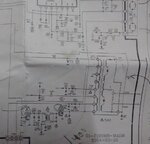eagle1109
Full Member level 6

- Joined
- Nov 20, 2014
- Messages
- 393
- Helped
- 4
- Reputation
- 10
- Reaction score
- 7
- Trophy points
- 1,298
- Location
- Saudi Arabia
- Activity points
- 5,956
Hello,
I'm working on CRT TVs repair course.
The one I worked on yesterday has very clicking sound; like 60Hz clicks near the SMPS unit.
The screen charges, and won't start because of this sound.
What could it be?
I'm working on CRT TVs repair course.
The one I worked on yesterday has very clicking sound; like 60Hz clicks near the SMPS unit.
The screen charges, and won't start because of this sound.
What could it be?








